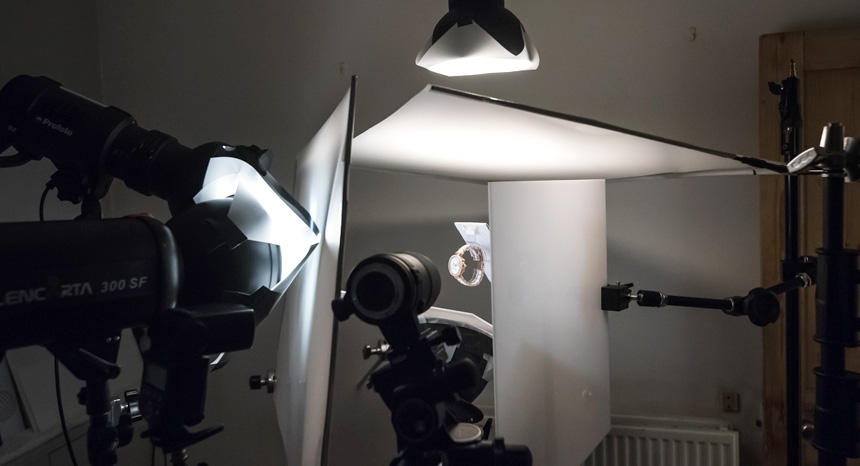
What is a Scrim Light?

A Scrim Light is a lighting technique used in studio photography and video/movie productions. A Scrim Light combines a sheet of translucent material, called a scrim, with a separate light source shining behind it.
The front of the scrim emits a nice diffuse lighting effect, similar to a softbox. But you can move the light source behind the scrim to control the appearance of the light as seen in reflections. This is especially useful for studio photography of products.
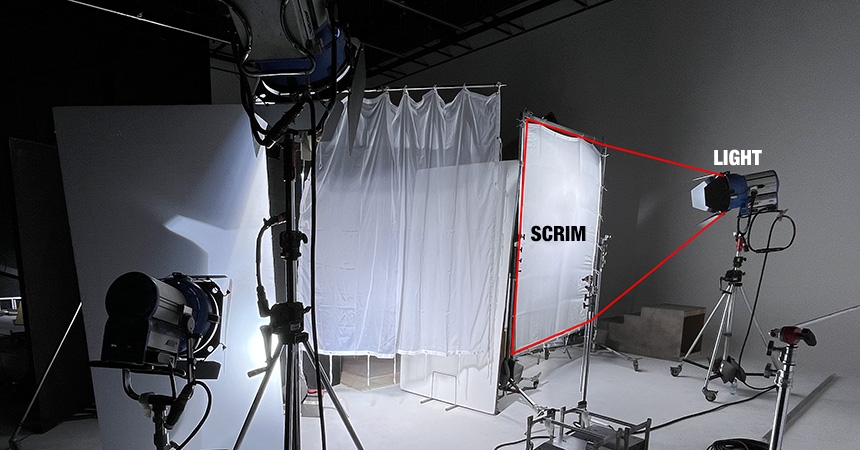
So the scrim is a type of light 'modifier'. Let's have a look at a range of light modifiers developed for studio photography and learn why a scrim light has become an essential light for studio photographers.
Types of Light Modifiers
Studio photographers have invented many ways to harness and control the light emitting from light bulbs. If you light a product using just bare bulbs, the shadows would be very sharp and harsh, and the highlights (the reflections of the bulbs) would be tiny and very bright.
Using bare bulbs could be suitable for lighting some very specific products, but I can't think of many. Lighting with small light sources like bare bulbs is called 'hard lighting'. As it creates hard shadows.
Let's look at some methods used to modify the light from light bulbs.
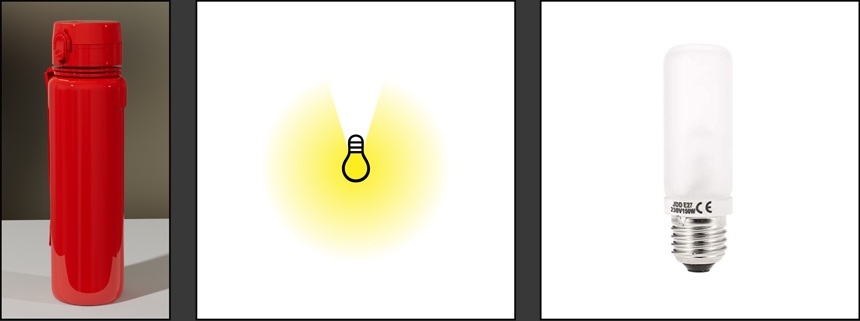
Reflector
A reflector surrounds the bulb and creates a larger area of reflected light. You can still directly see the bulb, and this type of light can look messy in your reflections. It's fine to use if the subject you are lighting does not have glossy reflections.
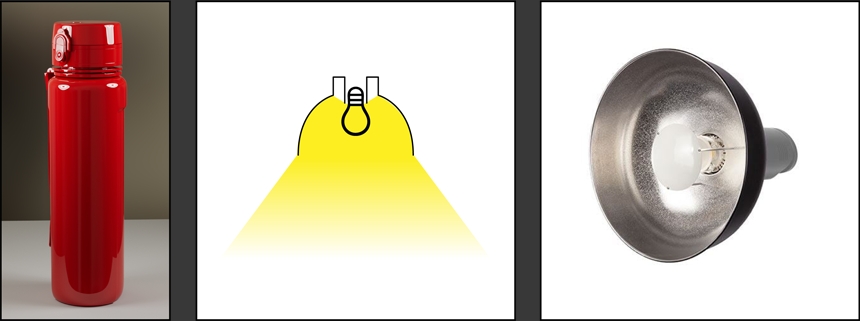
Snoot
A snoot is a tube (sometimes with a lense too) that's put in front of the bulb. You can use snoots to direct a beam of light at specific regions of your subject. It's very much like a spotlight. Snoots create a hard lighting effect and hard shadows.
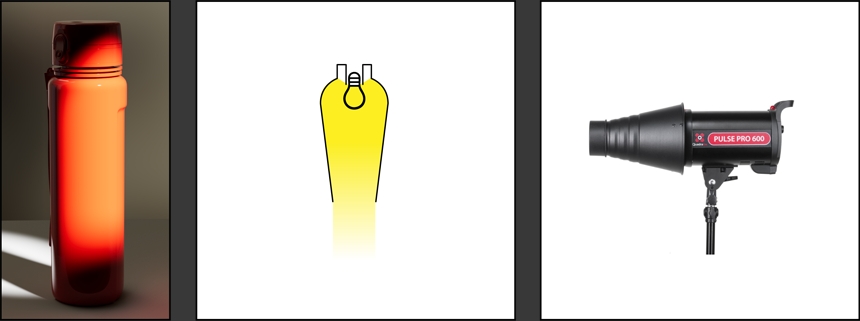
Diffuser
You can place translucent white fabric over the reflector to diffuse the lighting effect. This softens the lighting effect and gives the appearance of a round softbox.
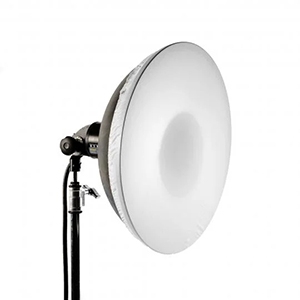
Umbrella
Light umbrellas are an attempt to increase the size of the light and create a much softer lighting effect. The light source faces the umbrella and illuminates its surface. Umbrella lights work well for portrait photography to create nice soft lighting for people's faces. However, umbrellas are not ideal for product shots as their reflection looks ugly with too much detail.
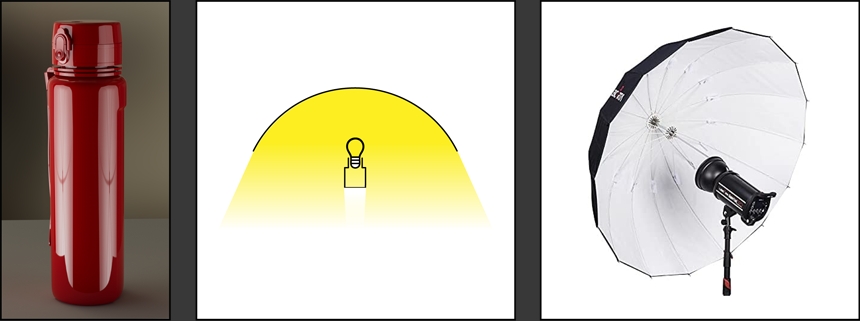
Softbox
An improvement on the umbrella is a softbox. A softbox is a light source placed inside a large rectangular reflector with white fabric across the front. Sometimes there is also a secondary layer of fabric inside the softbox too, to further diffuse the light.
The softbox takes the light from the bulb and distributes it evenly across the front surface. Softboxes are very popular for studio photography of products. You can get them in a wide range of sizes. They produce nice soft lighting, and soft shadows, and look great in reflections.
Limitations of Softboxes
The appearance of a softbox is fixed, as is its size. You could control the size of a softbox in the studio by using a black flag across the front surface to mask it. Or you can move it away from the product to make it look smaller in reflections. But basically, it's a fixed light source with very little control or ability to vary its appearance.
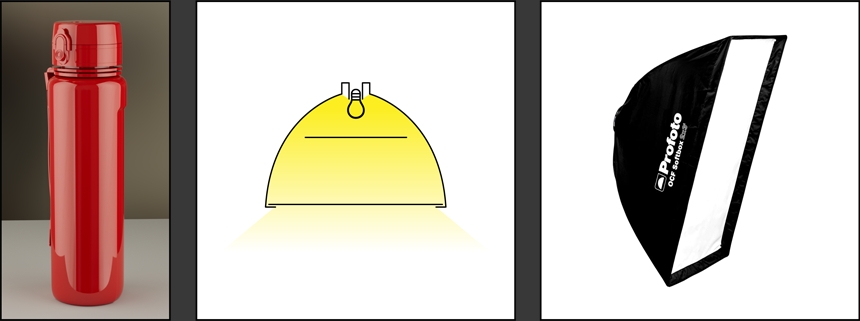
We need more lighting control
Really great studio lighting requires more control over the lighting quality and graduation of the light. This requires more advanced techniques that are harder to master but produce better-looking photographs.
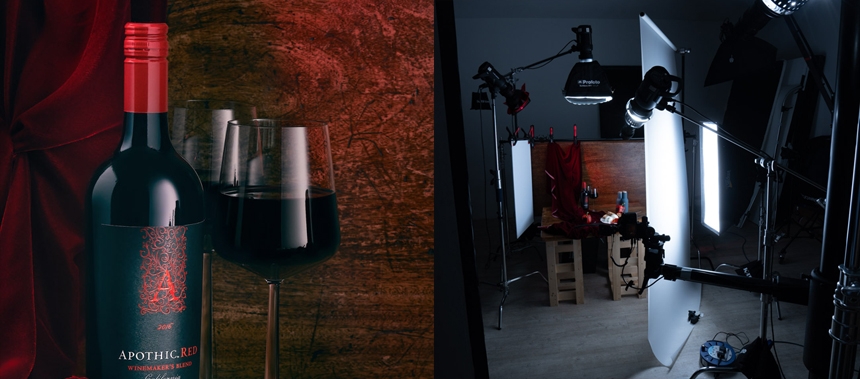
Introducing Scrims Lights
As we mentioned in the introduction, scrim lights are a sheet of fabric with a movable light source placed behind them. This light source can be a spotlight, a softbox, or even a kino light. It can be any light source. You can move this light in any orientation to shape the lighting effect - this adjusts both the illumination coming from the scrim and the appearance of the scrim when seen in reflections.
The scrim light offers the following features and benefits over all the other light types:
- Create harder lighting by bringing the light source closer to the scrim. The lighting effect will be smaller and more intense. Create softer lighting by moving the light source further from the scrim. The lighting effect will be larger and dimmer.

- The light source can be angled relative to the scrim in order to graduate the light across its surface. Graduating light is a key ingredient in more advanced product photography.
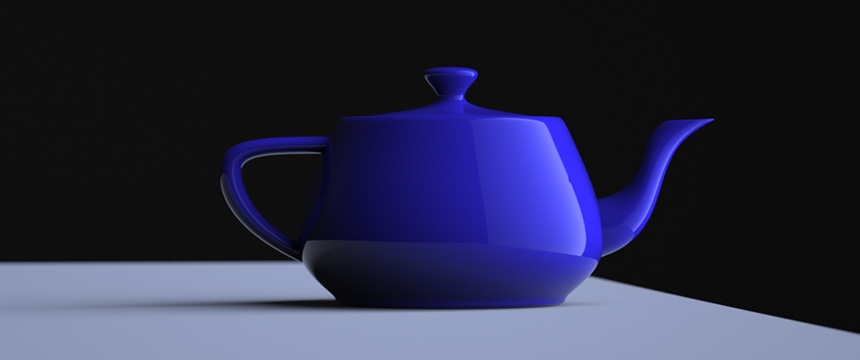
- All the other light types mentioned above can be used to light the scrim. Using the variety of lights you can shape the light in so many ways.
- Unless you place the light directly next to the panel, the lighting will always have some softness to its edges. Of course, there is the edge of the scrim sheet material itself which does have a hard edge if it's lit up to that edge.

- The light source can be colored with a gel to color the lighting emitting from the scrim light.
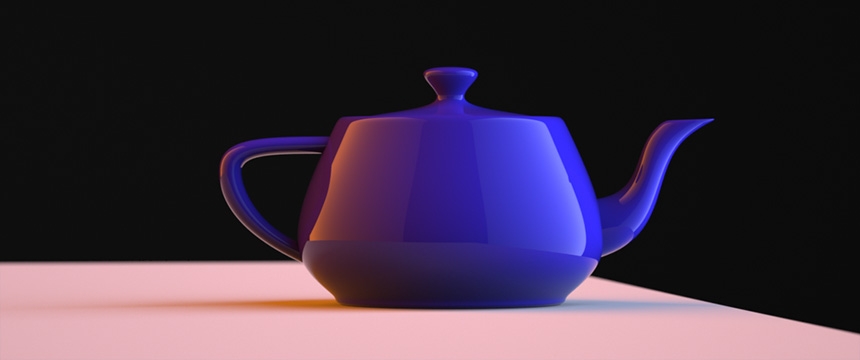
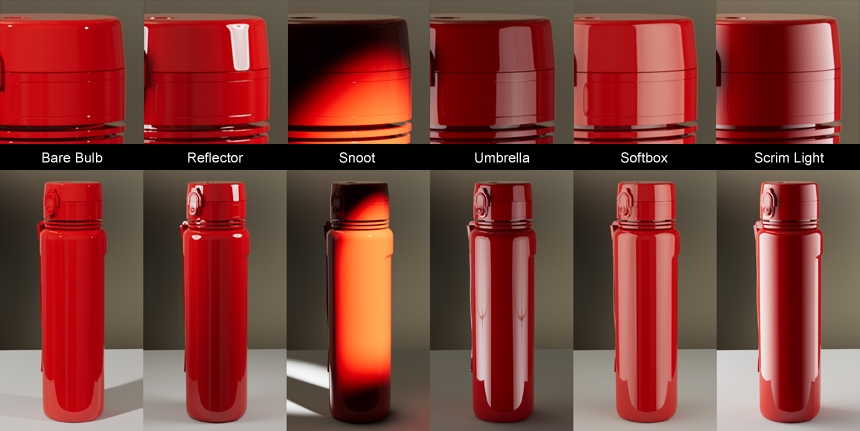
Scrim lights in 3D CGI?
When producing CGI images of products using 3D software and renderers, if we want the final image to look exactly like a real photograph, we need to mimic the real-world lighting techniques photographers use - including the scrim light!
Replicating a scrim light in 3D software is practically impossible. Setting up a material in your 3D software to react like a scrim, where you can shine a 3D light behind it, and the scrim will diffuse and illuminate correctly from the front surface is really difficult. Even if this was possible, this lighting method would be incredibly hard to compute and the render times would increase massively.
Even if you could set up this type of scrim shader and get it to render, it would be really hard to control in your 3D software. There are so many degrees of freedom to move the light behind the scrim to change the lighting effect. It would take a long time to position the light relative to the scrim to get the effect you want in your subject.
I think it's for these reasons, I have never seen anyone using scrim lights in 3D software.
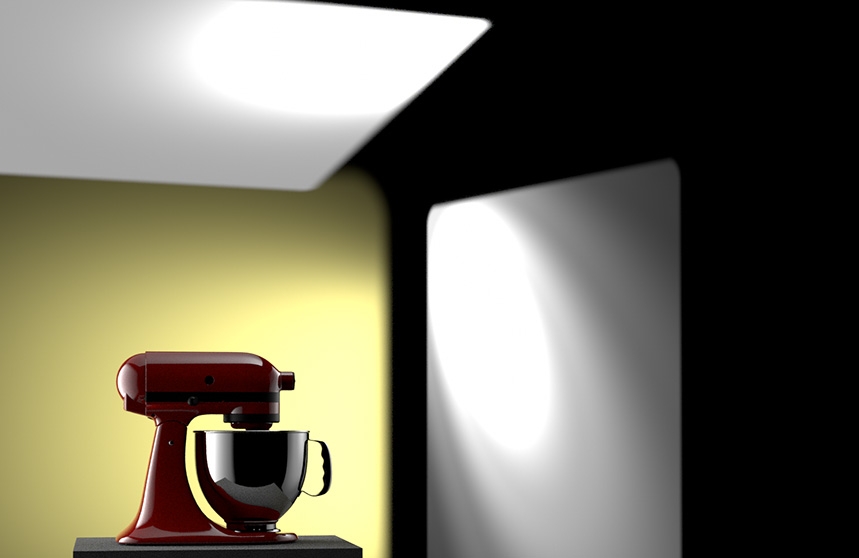
Scrims Lights are coming to HDR Light Studio
The reason we know so much about scrim lights and why we wrote this article is that scrim lights are coming to HDR Light Studio. We have solved this challenge by making scrim lights that are easy to use, render fast, and will take the quality of your 3D renders to new levels of photorealism. Our scrim lights work with all our plugins and we can't wait to show you this new feature.
Please sign up for our email news to keep updated on our next HDR Light Studio release.
A big thank you to photographer Max Bridge for the use of his behind-the-scenes images in this article.
Personal site: max-bridge.com Production company: patchlondon.com
This entry was posted in Lighting Demos, Tutorials and Tips.


